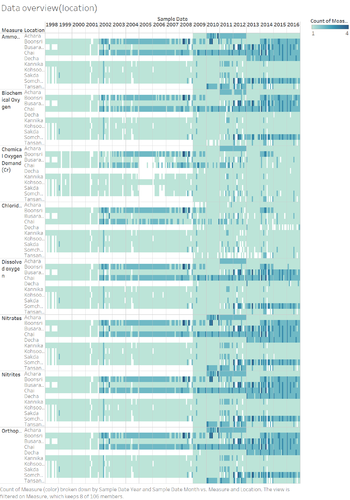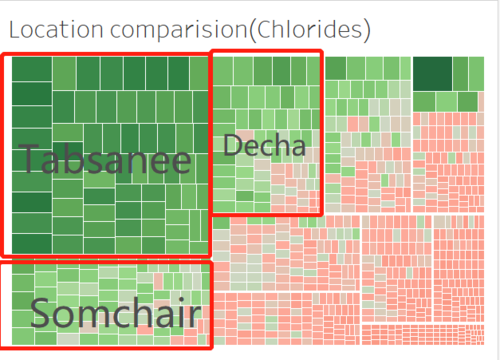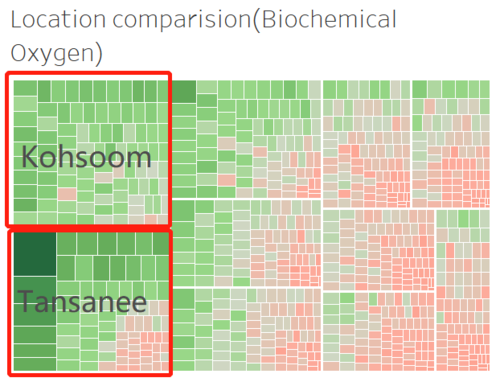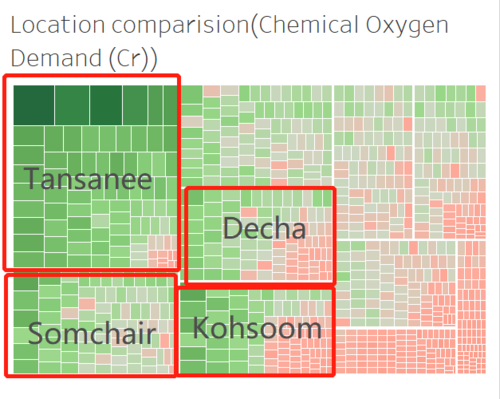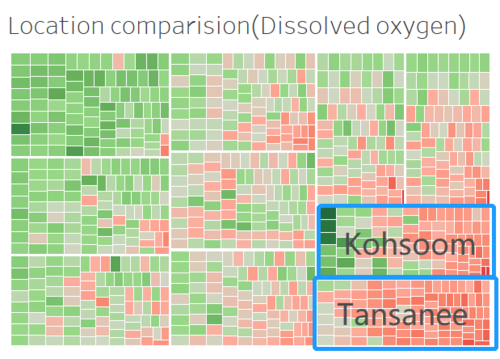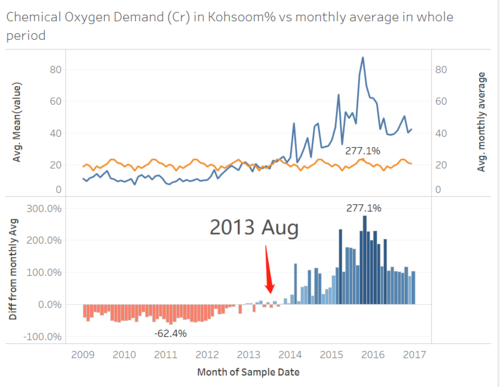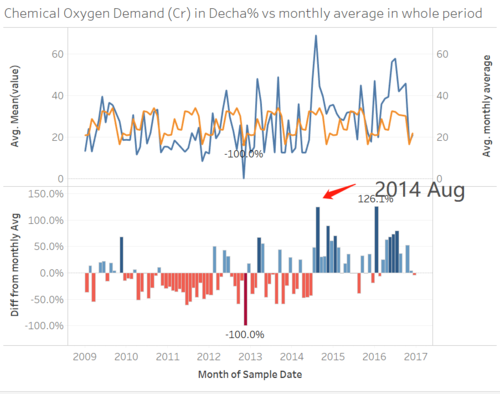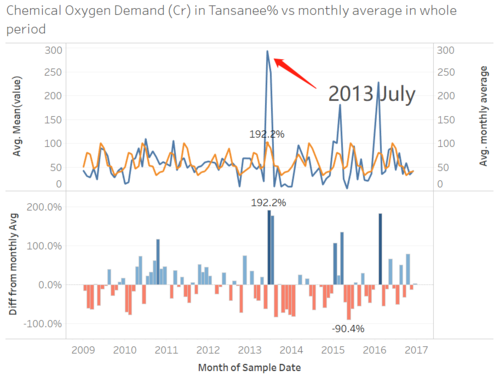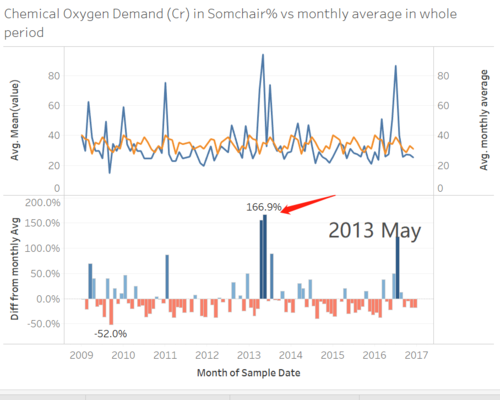Difference between revisions of "ISSS608 2017 T3 Assign BI HE Question"
He.bi.2017 (talk | contribs) |
He.bi.2017 (talk | contribs) |
||
| Line 76: | Line 76: | ||
Based on observation from the tree maps above, I suspected there may be abnormal human activities in the area near Tansanee and Kohsoom specifically. <br /> | Based on observation from the tree maps above, I suspected there may be abnormal human activities in the area near Tansanee and Kohsoom specifically. <br /> | ||
| + | |||
| + | |||
<big>'''Comparison in time series'''</big><br /> | <big>'''Comparison in time series'''</big><br /> | ||
| + | I did the further research for Chemical Oxygen Demand(Cr). The data from all 4 suspected location are shown in time series pattern. | ||
| + | The upper part of graph shows the real time data value (blue) and the monthly average value(yellow), and the bottom part shows the difference between real-time data and monthly average data with bar chart. | ||
<table width=90%> | <table width=90%> | ||
| Line 98: | Line 102: | ||
<table width=90%> | <table width=90%> | ||
<tr> | <tr> | ||
| + | |||
Above are the graphs for Busarakhan(left) and Somchair(right). They shared similar pattern for data trend. They got spike in same period of time and similar value with the percentage of difference from monthly average (189.5% and 188.4% respectively). Based on the observation of map, they are not from the same river. So, we can make an assumption that in Busarakhan and Somchair are affected by similar human activities between 2012-2017. | Above are the graphs for Busarakhan(left) and Somchair(right). They shared similar pattern for data trend. They got spike in same period of time and similar value with the percentage of difference from monthly average (189.5% and 188.4% respectively). Based on the observation of map, they are not from the same river. So, we can make an assumption that in Busarakhan and Somchair are affected by similar human activities between 2012-2017. | ||
</tr> | </tr> | ||
Revision as of 05:41, 10 July 2018
Q1 Characterize the past and most recent situation with respect to chemical contamination in the Boonsong Lekagul waterways. Do you see any trends of possible interest in this investigation?
Method
Month-to-Month comparision
The line graph is used to display the trend of each indicator. Set up the axis as dual axis for real time waterway data and monthly average data. And synchronize the axis for two lines.
For the second part of the graph, the bar chart can be used to show the change of difference from monthly average. The setting for columns and rows is as below.
The filter for measure and location provides user to observe the trend for each indicator in each location.
Location comparison
tree map is also useful in this case. Filters and marks setting are below
Insights
Data overview
Based on the observation of all 106 indicators, only eight of them have relative complete data for all 10 locations in the period of 2009-2016.
They are:
- Ammonium
- Biochemical Oxygen
- Chemical Oxygen (Cr)
- Chlorides
- Dissolved Oxygen
- Nitrates
- Nitrites
- Orthophosphate
So, the further research will have based on these 8 chemistry indicators.
location comparison
The tree map of shows the difference from the location average for all location in all period of time. From Tree maps for all 8 chemistry indicators, we can observe that Some of specific locations show up several times with the data above (or below) the average for long period, such as Tansanee, Kohsoom, Sochair and Decha.
Comparison in time series
I did the further research for Chemical Oxygen Demand(Cr). The data from all 4 suspected location are shown in time series pattern. The upper part of graph shows the real time data value (blue) and the monthly average value(yellow), and the bottom part shows the difference between real-time data and monthly average data with bar chart.
The tree map of dissolved oxygen shows the difference from the location average for all location in all period of time.
It is obvious that the data from Chai is higher than location average in most of time, Busarakhan,Somchair,Boonsri and Achara are also detected to have higher than average dissolved oxygen rate in a specific of period.
After signed up all the abnormal spots for dissolved oxygen, we can have an assumption that there are human activities along the river signed in green and near the red circles.
